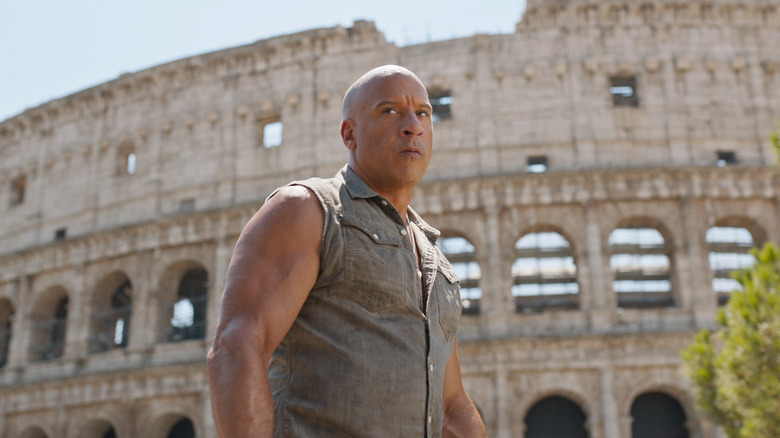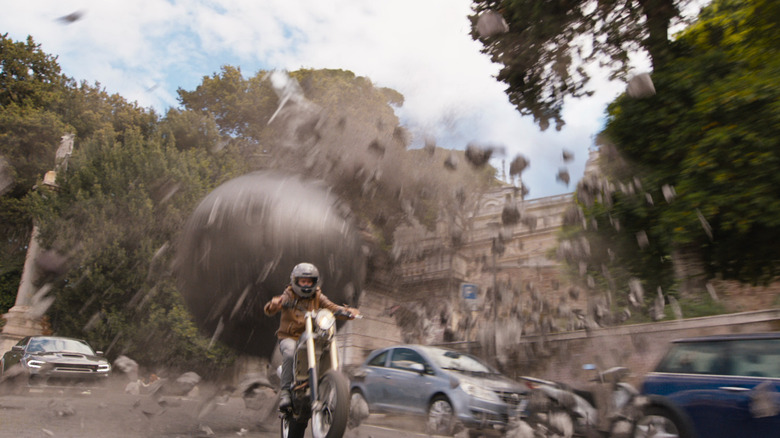Fast X's Bomb Sequence Was Shot With A Massive Two Ton Practical Prop
The "Fast and Furious" series has never shied away from using CGI, mostly because its increasingly extravagant stunts can't all be done practically. Believe it or not, Vin Diesel and Paul Walker didn't actually drive a Lykan Hypersport out the 50th-floor window of a skyscraper in "Fast and Furious 7." And if you've seen the behind-the-scenes footage from the scene in "Fast X" where Jason Momoa's Dante blows up the armored truck carrying Diesel's Dom Toretto, you'll have seen plenty of blue screens all over the place.
But that doesn't mean everything in the "Fast" franchise is a digital fabrication. In fact, the series has used practical effects whenever possible, causing a hell of a lot of damage along the way. With "Fast X," director Louis Leterrier wanted things to be relatively grounded, especially after "F9" sent Chris "Ludacris" Bridges and Tyrese Gibson into space. This is why you'll see a practical stunt involving Vin Diesel's helicopter-suspended car in the tenth installment. Very down-to-earth stuff, Louis.
But the practical stunt work wasn't just reserved for Diesel, who's known for being somewhat reckless when it comes to doing his own stunts. When it came to one of the film's biggest spectacles, the "Fast X" team pushed themselves to shoot as much of it as possible practically and managed to pull off one of the "Fast" franchise's most stunning set pieces in the process.
That was a real giant steel ball
"Fast X" features a scene that recreates one of the "Fast" franchise's greatest moments, wherein Jason Momoa's Dante sends a giant bomb rolling through the streets of Rome in an insane plot to blow up the Vatican. It makes for exactly the kind of outrageous set piece we've come to expect from this franchise, and if you think the "Fast X" crew didn't actually roll a 2-ton ball through Rome and set it on fire, you're wrong.
The film's visual effects supervisor Peter Chiang told Indiewire how he did just that, revealing that he, production designer Jan Roelfs, second unit stunt coordinator Andy Gill, and special effects supervisor Alistair Williams constructed a giant steel ball coated in perspex and fiberglass. Chiang added:
"When I did the animation tests, I wanted the bomb to be 10 tons. That lends itself to a particular type of movement and speed, but there was no way that special effects could make a 10-ton bomb move down a street in Italy with all of this fragile architecture and be controllable."
Settling for a 2-ton practical version, Chiang and co. had to be able to control their creation. To do so, they built an axle into the steel ball which was connected to overhead wires and, according to Gill, a winch, "designed to tow gliders up into the air." He continued:
"In our testing, we were able to get it up to about 35 miles an hour and start and stop it anywhere we wanted. Knowing that we had control, we were able to put the ball in places that we thought weren't going to be possible [...] we could drive cars around it, we could jump it, we could do anything we wanted to."
"Fast X" is currently playing in theaters.

